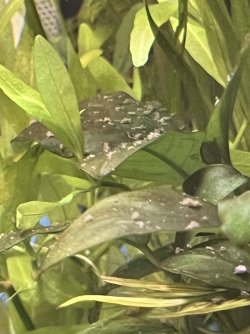powerdyne6
Fish Crazy
- Joined
- Feb 2, 2007
- Messages
- 335
- Reaction score
- 116
Curious to know what small bottom feeder / algae eating fish are out there or if there are any that does both of this? Also I am only wanting a fish that can be alone (if any exist).
I only have a 20 gallon tank that currently houses 11 Penguin Tetras and is lightly planted. I currently have gravel as a substrate (might be an issue to bottom feeders)
So looking for something that stays relatively small.
My tank PH hovers somewhere around 7.4 to 7.8
My main concern is I have started to see a rise of Brown Algae in my tank and looking to find the best solutions to this.
Thanks
I only have a 20 gallon tank that currently houses 11 Penguin Tetras and is lightly planted. I currently have gravel as a substrate (might be an issue to bottom feeders)
So looking for something that stays relatively small.
My tank PH hovers somewhere around 7.4 to 7.8
My main concern is I have started to see a rise of Brown Algae in my tank and looking to find the best solutions to this.
Thanks



